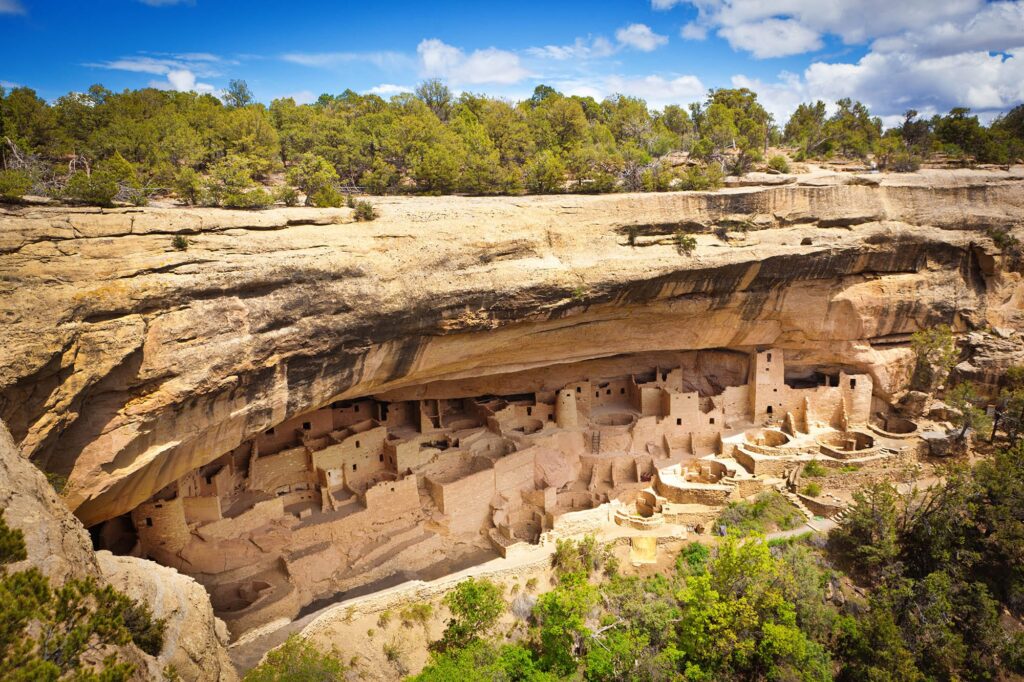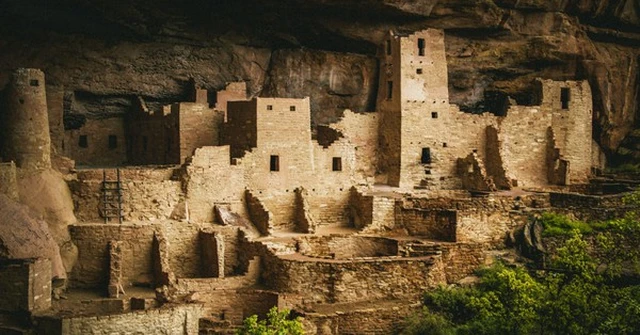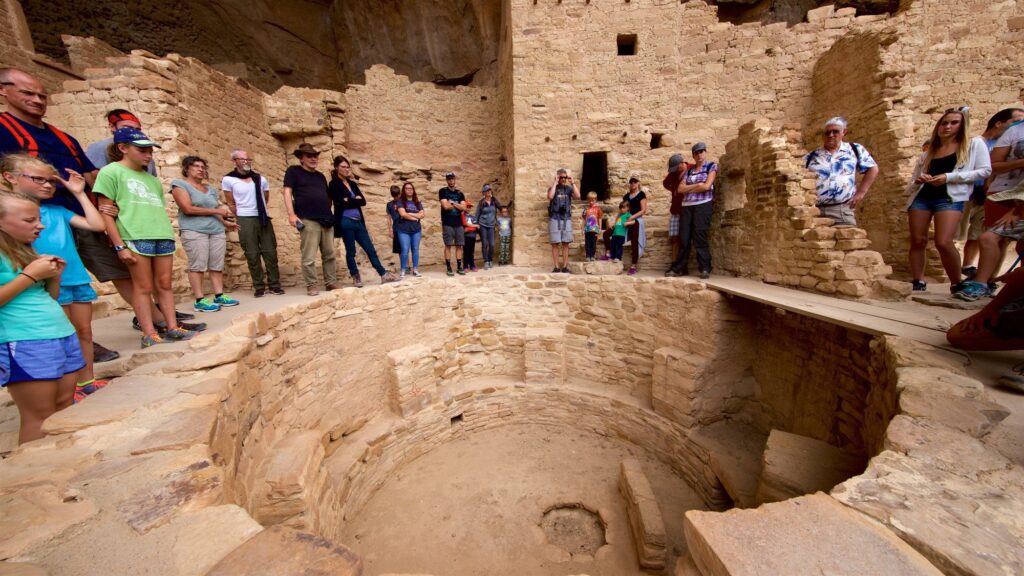1. Introduction: The Enigmatic Cliff Dwelling
Perched high on the cliffs of southwestern Colorado, Cliff Palace at Mesa Verde stands as one of North America’s most remarkable archaeological sites. Known for its breathtaking beauty and engineering ingenuity, this cliff dwelling was built by the Ancestral Puebloans between A.D. 1190 and 1280, a period that saw the rise of advanced architectural techniques among indigenous peoples of the American Southwest. As the largest cliff dwelling in North America, Cliff Palace offers a glimpse into the lives of a society deeply attuned to both nature and community, and it has captivated archaeologists and visitors alike for centuries.
2. A Strategic Location: Nature’s Protection
The choice of location for Cliff Palace speaks volumes about the foresight and resourcefulness of its builders. The dwelling was constructed in a massive alcove of sandstone, naturally shielded from the harsh elements of the region—be it rain, snow, or intense sun. This unique positioning allowed the inhabitants to enjoy a stable and comfortable living environment year-round, protected from the extreme weather conditions typical of the Colorado Plateau.
The alcove’s shelter provided insulation from winter chills, while the stone walls of the canyon kept the structure cool in the summer heat. In this way, the Ancestral Puebloans ingeniously utilized their surroundings to create a safe and sustainable living space, further enhancing the livability of the Cliff Palace.

3. Architecture and Engineering: A Testimony to Skill
Cliff Palace’s architecture stands as a testament to the ingenuity of its creators. The multi-level structure is a remarkable feat of engineering, built into the sheer cliff face using sandstone blocks, mortar, and wooden beams. Over 150 rooms were constructed, with some built into the rock itself, while others were freestanding and stacked on multiple levels. The walls, still standing strong after centuries of exposure to the elements, showcase the durability of the materials used and the precision of the builders.
The most striking feature of the structure is its seeming defiance of gravity, as it appears to cling to the canyon wall with remarkable stability. This design reflects an intricate understanding of architecture and engineering, where the careful placement of stones and beams ensured the integrity of the structure despite the rugged terrain.

4. Social and Spiritual Life: The Role of the Kiva
The 23 kivas found within the Cliff Palace complex provide insight into the social and spiritual lives of the Ancestral Puebloans. Kivas are circular, subterranean rooms that were used for ceremonial gatherings and spiritual rituals. Their presence in Cliff Palace suggests a society deeply invested in religion and community life, where these spaces played a crucial role in maintaining social cohesion and cultural identity.
Each kiva was likely used for different purposes, ranging from religious ceremonies to communal meetings, highlighting the importance of spirituality in daily life. The complex network of kivas within the community suggests a society that was highly organized, where shared beliefs and practices formed the backbone of social structure and relationships.

5. The Mystery of Abandonment: Why Did They Leave?
Perhaps the most compelling aspect of Cliff Palace is the mystery surrounding its abandonment around A.D. 1300. Despite the thriving community that once called this place home, the inhabitants left without a trace of explanation. No written records or direct evidence provide insight into why such a well-established community would suddenly abandon its stunning cliffside home.
Several theories have been proposed, with the most common involving environmental factors. A prolonged drought during this period may have made agriculture and water sources scarce, leading to the displacement of the people. Others suggest social or political upheaval, while some point to a possible migration due to cultural or religious changes. Regardless of the cause, the abrupt disappearance of the people of Cliff Palace adds an air of mystery that continues to captivate the imagination of researchers and visitors alike.
6. Conclusion: A Legacy of Ingenuity and Mystery
Cliff Palace at Mesa Verde remains a powerful symbol of the Ancestral Puebloans’ resilience, creativity, and deep connection to their environment. It stands as one of the greatest achievements of ancient North American architecture, a testament to the advanced engineering and social organization of a people who lived in harmony with the natural world.
The mystery of its abandonment only enhances its allure, leaving us with questions that remain unanswered to this day. What happened to the people of Cliff Palace? Why did they leave such a magnificent site behind? These questions continue to intrigue archaeologists, historians, and visitors, ensuring that Cliff Palace remains not only an archaeological wonder but also a source of ongoing fascination and study.
